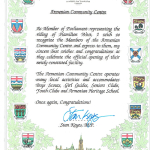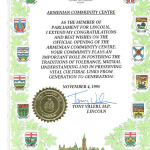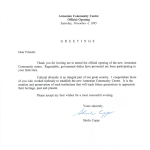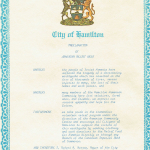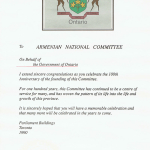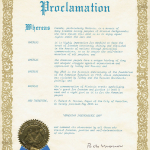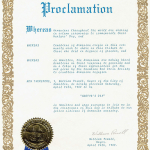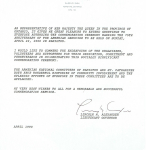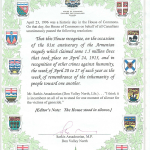History of Hamilton’s Armenian Community
Armenians started building a community in Hamilton and surrounding areas (Brantford, St. Catharines) in the mid-1850’s. Many of these first Armenians were escaping persecution in their homeland and looking for a better life for themselves and their loved ones.
By the late 1800s, the community had continued to grow, with many Armenians emigrating mainly from the village of Keghi to Southern Ontario. This influx of Armenians formed the nucleus of future organized community life.
The first records we have of an organized Armenian community come from 1908, in the form of a meeting minute book page for the “Tashnag Club”. The page recorded discussion about raising funds to help Armenians “back home”. These first meetings were held in private homes.
In 1913, the Armenian Relief Society established its Hamilton chapter, with the aim of helping new immigrants settle into Canadian life. They also helped raise funds through various activities to support this new community, and Armenians “back home”.
1915-1923 became the hardest time for this new Armenian-Canadian community, with news of atrocities, massacres, and deportations suffered by Armenians in Turkey and Armenia. These events would come to be known as the Armenian Genocide.
Fundraising efforts were increased to those affected by the genocide as much as possible.
Around this time, a new influx of Armenian immigrants arrived in Hamilton, including more than 100 Armenian orphans to Georgetown. These orphans are known as the “The Georgetown Boys”.
In the coming years, a vibrant Armenian community hub built up in the the area between Burlington St. to Main st., and Sherman Ave. to Birch. This square formed a “little Armenia”.
Community life thrived, and additional organizations were formed for youth, (Armenian Youth Federation – 1933), including an Armenian day school. Church life also became more organized.
The first “Armenian Community Centre” was built at 69 Princess Street. It became the hub of all Armenian community life in Hamilton and surrounding cities. During that decade, a wave of new Armenian immigrants arrived, the majority of them from Greece. In the 1960’s, a wave of immigrants from Syria arrived, followed by Lebanese Armenians in the seventies and early eighties.
Historical Documents
1980s to Present
In the 1980s, Hamilton Armenian community life was at its height, once-weekly Armenian language school and summer school, church, choir, scouts, community centre, 6 organizations and a very optimistic and vibrant community numbering about 2000.
1995 was another pivotal year, when the community centre, with the support of the City of Hamilton, moved to its new and larger location at 191 Barton St. in Stoney Creek.
Today, after 100 years of organized community life in Hamilton, the Armenian community is still active, but facing new challenges due to demographics. Some 250 families, gathered around the community centre and St. Mary’s Armenian Apostolic church, continue to keep their heritage, culture and traditions alive, at the same time participating in Canadian and local community life.
Today, the Armenian Revolutionary Federation (Tashnag Club), the Armenian National Committee, the Armenian Relief Society, the Armenian Youth Federation, Homenetmen, Armenian Education Committee, and the Armenian Radio hour all call the Armenian Community Centre of Hamilton their home.
